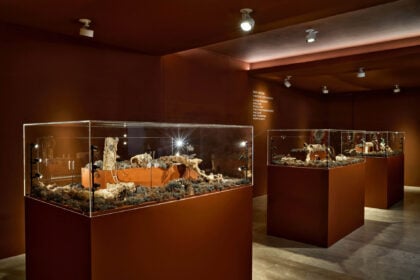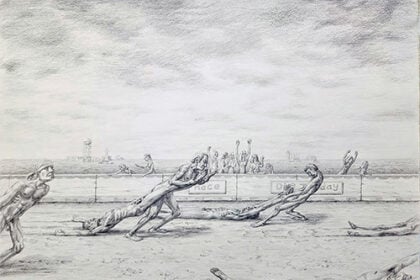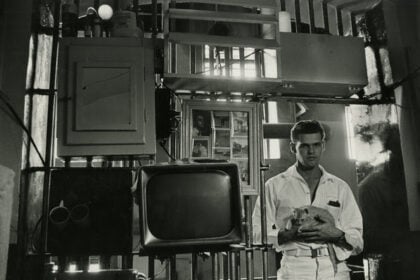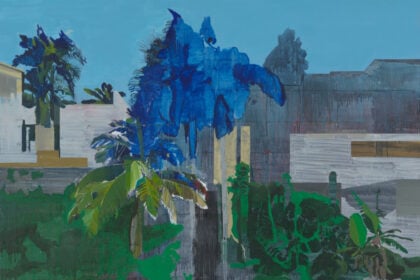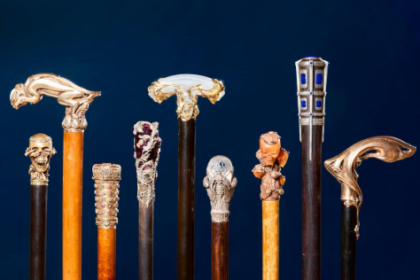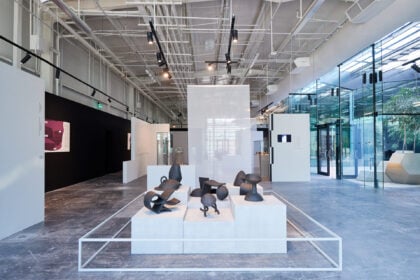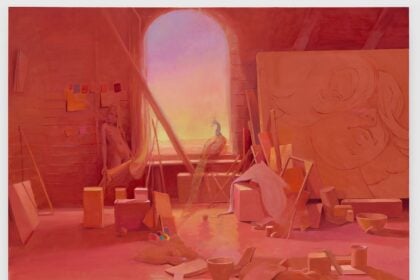London, 19 October: A new display will celebrate three generations of women silversmiths from the Sultanate of Oman, Tuful Ramadan (1949–2021), Mahfoudha al-Balushi (b. 1965) and Fatma al Najjar (b. 1992), showcasing their beautiful silver work and inspirational personal testimonies.
The Asahi Shimbun Display, Making their mark: women silversmiths from Oman, presenting the results of an all-women-led research project, will highlight their knowledge and technical skills – as well as their dedication and passion for their profession in a region where silversmithing is usually done by men.
Video interviews with the silversmiths and examples of their handcrafted jewellery are complemented by close-up images of the pieces, captured with a digital microscope and a scanning electron microscope, and 3D scan renders. These scientific images and videos reveal the variety of production techniques, tools and skills used by the women to create their intricate designs, furthering our understanding of Oman’s silversmithing heritage.

© Trustees of the British Museum

© Trustees of the British Museum
Making their mark presents the results of fieldwork carried out between 2019–2022 as part of an ongoing, all-women-led research project launched by the British Museum in collaboration with scholars from Oman, Canada and the USA. They include Dr Aude Mongiatti (British Museum), Moza Sulaiman Al-Wardi (Oman Across Ages Museum), Marcia Stegath Dorr (independent scholar, Ann Arbor, Michigan), and Dr Fahmida Suleman (Royal Ontario Museum).
Highlights of the display include jewellery by silversmith Tuful Ramadan and contemporary designer Fatma al Najjar, as well as men’s accessories by Mahfoudha al-Balushi including a silver-embroidered belt to wear the emblematic Omani curved dagger (khanjar). These contemporary pieces are complemented by a magnificent indigo-coloured dress from Dhofar embellished with silver beads and a selection of 1950s jewellery from the collection at the British Museum.

© Fatma al Najjar
For almost sixty years, Tuful bint Ramadan Awadh Bimkhalef (1949–2021) was a highly skilled and successful silversmith running her own workshop in Taqah, Dhofar. She married into a family of silversmiths and learnt the craft from her brother-in-law. Widowed in her mid-twenties, she raised her three sons through her trade, receiving prizes for her dedication and hard work.
Mahfoudha al-Balushi (born 1965) is a successful businesswoman from the northern coastal town of Al-Khabura in the Al-Batinah region. She specialises in the design and manufacture of silver-embellished accessories for Omani men. A professional silversmith for over forty years, she comes from a family of silversmiths and was taught the craft by her father.
Fatma al Najjar (born 1992) is an innovative designer who draws inspiration from centuries of Omani cultural heritage, interpreting it for contemporary audiences. Fatma is Dhofari, like Tuful, but grew up in the capital city of Muscat, where she runs numerous artistic projects, including her jewellery business RAHINA.

© HH Sayyid Shihab bin Tariq Al Said Photo: Neil Richardson and Marcia Dorr
Dr Zeina Klink-Hoppe, Curator of Modern Middle East, said, “Makers tend to remain unnamed or invisible, even more so when they are women. To be able to associate a face and a voice with a particular object is very special. It acquires a certain resonance imbued by the personality of its maker, her wishes, her hopes, her sense of humour.”
According to the late silversmith, Tuful Ramadan, “Accuracy is in a woman’s nature. A man also works well, but women are known for making delicate objects.”
Fatma al Najjar, contemporary silversmith, said, “My jewellery is a living experience, a conversation between me and my ancestors. It embraces a truth within me and the women I am surrounded by.”
Mahfoudha al-Balushi, contemporary silversmith, commented, “I love this profession because my forefathers started it, I don’t want it to disappear.”
The Asahi Shimbun Display Making their mark: women silversmiths from Oman will be open in Room 3 from 19 October – 17 December 2023.












